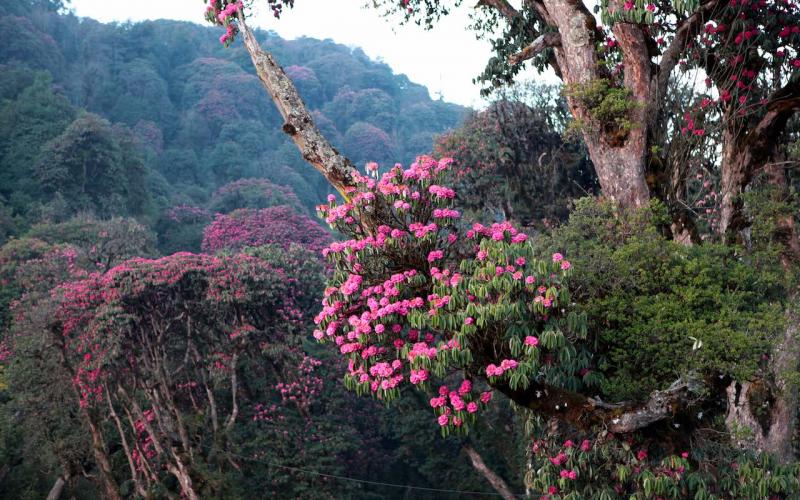Natural resources of economic significance in Nepal
- On 30 Jan 2020

The economic potential of Nepal is closely bound to its natural resources: agricultural lands, wetlands, forests, protected areas, and river systems. Although agricultural land comprises only 20% of the total land area, agriculture is the major determinant of economic activities and the nation’s socio-political identity, according to the 1998 Nepal Human Development Report (NSAC 1998). Agricultural land is unevenly distributed, with 55.7% in the Terai, 37.3% in the hills, and 6.9% in the mountains. Though farms are mostly subsistence-level, agriculture contributes over 50% of household incomes, provides employment for about 80% of the population, and exerts considerable influence on the manufacturing and export sectors of the economy. Freshwater resources are abundant in Nepal, with approximately 200 billion m3/s of water contained in various river systems. The commercial hydroelectric potential of these rivers has been estimated to be up to 45,000 megawatts (MW). The water also holds immense potential for crop irrigation, feeding an estimated 90% of cultivable land.
Forests are an important natural resource and cover some 29% of the land area. This is a mere fraction of Nepal’s original forest cover which has suffered increasing population pressures and demand for arable land, pastures, fuel, fodder, and farm implements. The high demand for agricultural land has led to considerable deforestation and loss of ground cover. This, together with natural phenomena such as floods and landslides, is thought to contribute to annual soil loss of 20-25 tonnes/ha. However, in spite of the decline in forest cover, forested land is still one of the most valuable natural resources of Nepal through its attraction for eco-tourism. The majority of protected areas including major national parks
Nepal is divided into seven states each of which comprises a number of districts. The distribution of 75 districts in the seven states is as follows:
The 2006 HDI was based on 2004 data made up of forested land; their contribution to the national economy through foreign exchange earnings from the export of forest products is of major importance. Nepal’s national bioresources currently traded internationally are mostly uncultivated and originate in the wild. As published in the Nepal Gazette, Nepal’s 188 biomaterials commonly found in international trade consist of various parts of plants, such as roots and tubers of 39 plants, barks of seven plants, leaves of 26 plants, flowers of 14 plants, fruits, and seeds of 61 plants, whole plants of 12 plants, gum and resins of eight plants, and miscellaneous parts of 11 plants (NNC 2005).
Tourism is the second most important source of foreign exchange for Nepal. During the period from 1996-2005, over 45% of the total number of visitors to Nepal, on average, visited designated protected areas. Tourist arrivals in the country are projected to increase by 8-10% annually; visitors to protected areas are also expected to increase according to this ratio. Data indicates that approximately 60% of tourists visited Nepal’s protected areas in 2004. Among the protected areas, the Annapurna Conservation Area and Chitwan National Park received 36% and 34% visitors, respectively. Sagarmatha National Park received 20% of visitors, Shivapuri National Park (ShNP) received 5%, and Langtang National Park 3%. Three protected areas did not receive visitors at all: Khaptad National Park, Parsa Wildlife Reserve, and Dhorpatan Hunting Reserve (DNPWC 2006). This period coincides with the recent political conflict in Nepal; the number of visitors to various sites possibly reflects the accessibility of these locations and security concerns. As tourism-related activities in and around protected areas generate revenue, tourism will remain central to the economic sustainability of the protected areas system.
